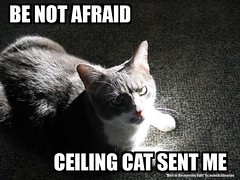Presenters: Jeannine Keefer and Crista LaPrade
Keefer provided the attendees with a brief overview of licensed images. Specifically, ArtStor and why it would be used in the classroom (mainly art historians). There are also many free or Creative Commons licensed resources for images:
- Flickr – range from amateur to professional, free to fully copyrighted
- Picasa – similar to Flickr, but less communal
- Google Images – search across the web
- Google Earth – geotagged photos for specific locations
- Creative Commons – search across several sites
- MorgueFile – stock photography
- OpenPhoto – stock photography
- TinEye – reverse image search engine for finding more like the one you have
- Cooliris – browser plugin for quickly flipping through images on various sites
- Social networks like Facebook & MySpace
LaPrade and Boatwright Library’s Digital Production Services does all of the digitization and scanning for the library as well as scanning for faculty who need to convert analog images to digital for non-art classroom purposes. Non-presentation uses for this service (ideas beyond PowerPoint) include creating reference posters for students and images supplementing faculty publications (within copyright). Unfortunately, faculty will have to find their own storage (DVDs, flash drives, etc.) and delivery options, as DPS currently does not have a server for storage and delivery.
There are many resources you could use to share images in the classroom, including Blackboard and ArtStor, but also free image storage/sharing resources or your own web pages or blog. However, there are several factors to consider, since these can also be tools for managing the images: purpose, platform, ownership, collection size, image manipulation, metadata, budget, tech support, data integrity, file types, and presentation tool. Some possible solutions include Adobe Bridge (with the full version of Photoshop), Extensis Portfolio, Flickr, and Picasa.
(Side note: I think that many of the folks in the room were expecting to have a discussion of how faculty are actually using images in their teaching, and perhaps less about the tools that can be used to do so.)


